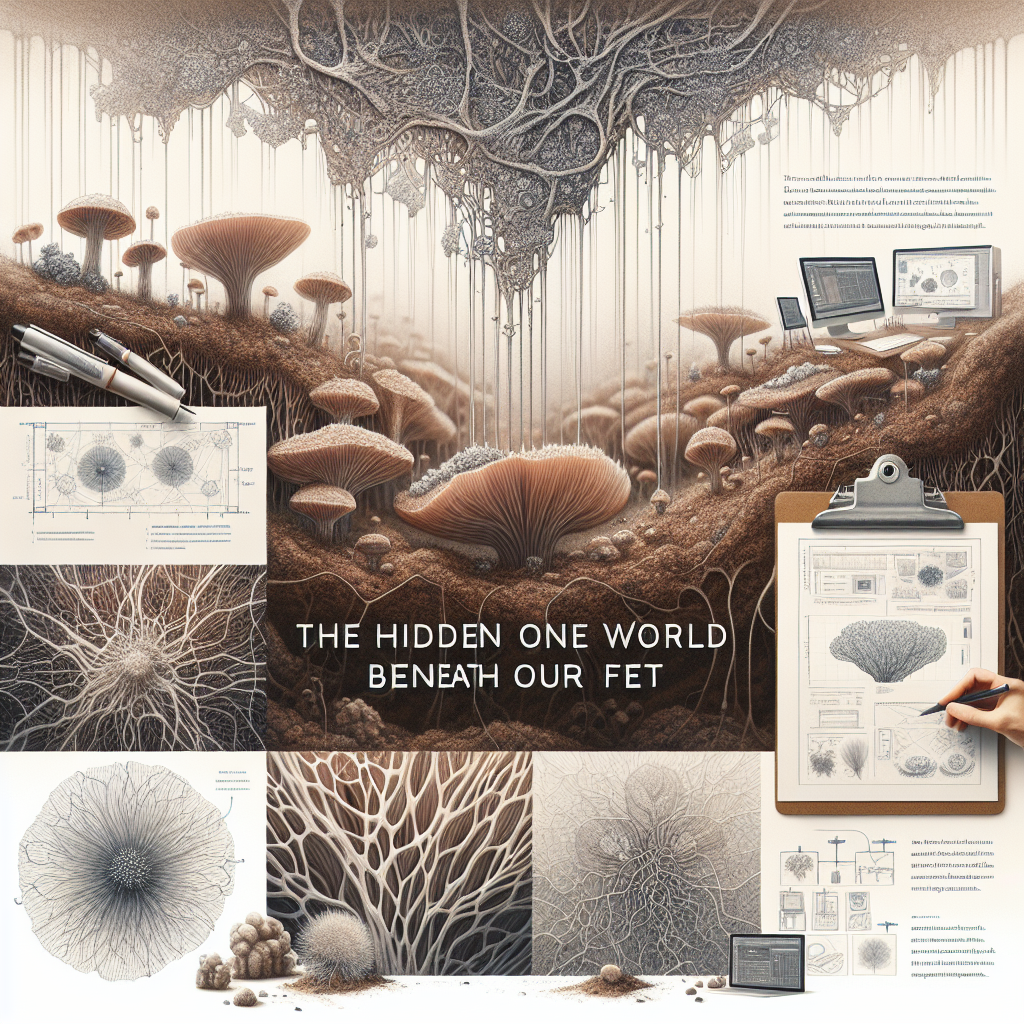Embarking on the exploration of Uncovering Intriguing Mycelium Facts, you will be guided through a journey of discovery. This comprehensive piece sheds light on the complex world of fungi and their intricate, underground networks known as mycelium. From the mysterious ways mycelium functions and thrives beneath the soil, to its uncanny abilities and potential applications in various fields – you will garner a new understanding of this remarkable organism.

Understanding the concept of Mycelium
Mycelium is a fascinating concept in biology that plays a vital role in complex ecosystems. This unsung hero, often unnoticed and out of sight, is a vital component in supporting life on Earth.
What is Mycelium?
Mycelium can be best explained as the vegetative part of a fungus. It consists of a mass of branching, thread-like structures known as hyphae. Most of the fungi you encounter in your daily life, including yeasts and moulds, possess a mycelial stage in their life cycle.
Basic structure of Mycelium
The hyphae constitute the basic structure of mycelium. These thread-like structures grow in a branching pattern, extending out in search of nutrients. Hyphae are usually just a few micrometers in diameter, but they can be several feet in length depending upon the species and conditions.
Mycelium in fungi life cycle
Mycelium plays a critical role in the life cycle of fungi. It is during the mycelial stage that fungi absorb nutrients critical for their growth and reproduction. The mycelium reproduces through the formation of spores, which then give rise to new fungal organisms.
Mycelium and Ecosystems
Mycelium contributes greatly to ecosystems, from sustaining plant life to recycling nutrients.
Role of Mycelium in soil ecosystems
In soil ecosystems, mycelium acts as a natural decomposer, breaking down organic material into simpler elements. The process helps to enrich the soil with vital nutrients. It also improves the soil’s capacity to retain water, thereby supporting plant life.
Impact of Mycelium on plant life
Mycelium forms a symbiotic relationship with plants, particularly those with roots. The fungi obtain sugars from the plant, while in return, the mycelium extends the plant’s root system, enhancing its ability to absorb water and nutrients.
Mycelium and nutrient cycle
In the nutrient cycle, mycelium plays a crucial role in breaking down dead and decaying matter. The process ultimately releases nutrients back into the ecosystem, making them available to other organisms.
Mycelium and Climate Change
Mycelium plays a unique role in combating climate change.
Ecological importance of Mycelium
Beyond its role in the nutrient cycle, mycelium also contributes to carbon sequestration. It achieves this by storing carbon within its complex network of hyphae, effectively removing it from the atmosphere.
How Mycelium helps in carbon sequestration
Through the process of decomposition, mycelium converts organic material into humus, a soil component rich in stored carbon. This conversion helps to dramatically reduce the amount of carbon dioxide released into the atmosphere.
Role of Mycelium in forest conservation
In forest ecosystems, mycelium serves as the “internet of the forest,” interconnecting and sustaining diverse species. Forest conservation efforts can greatly benefit from understanding and leveraging this underground network.

The longevity and expansion of Mycelium
The mycelium network is notable for its longevity and expansion.
Reproductive methods of Mycelium
Mycelium reproduces asexually via spores. Each individual spore can form a new organism capable of developing its own network of hyphae.
World’s largest Mycelium colonies
The world’s largest known organism is a mycelium colony. Known as the “Humongous Fungus”, this Armillaria solidipes colony spread over approximately 2,384 acres in Oregon, USA.
Mycelium’s incredible expansion
Mycelium holds an incredible ability to expand extensively. Its network can spread over large distances, and once established, it can persist in the environment for hundreds of years.
Indispensability of Mycelium
Mycelium offers numerous benefits to other organisms and maintains a balanced biodiversity.
Benefits of Mycelium to other organisms
Mycelium can serve as a food source for various organisms. Further, by improving soil structure, it facilitates the growth of a range of plant species.
Mycelium and maintenance of biodiversity
By playing a key role in nutrient cycling and facilitating the growth of various plant species, mycelium indirectly helps maintain biodiversity within ecosystems.
Significance of Mycelium in food chains
As decomposers, mycelium plays an integral part in food chains by recycling nutrients back into the ecosystem where they can be reutilized by plants and animals.
Microscopic Examination of Mycelium
A microscopic examination provides a detailed view of the intricate structure of mycelium.
Visual structures of Mycelium
Under the microscope, the mycelium appears as a network of branching hyphae, flowing seamlessly together to form a unified structure.
Identifying Mycelium under a microscope
Identifying mycelium under microscope requires practice and expertise since it shares similarities with other microbial structures. Nuanced details such as the thickness, branching patterns, and shapes of the hyphae can aid in identification.
Uncommon shapes and forms of Mycelium
While the common perception of mycelium is a network of branching hyphae, some species can adopt diverse uncommon shapes and forms, further adding to their intrigue.
Mycelium and Human Health
There are various potential therapeutic uses of Mycelium.
Potential therapeutic uses of Mycelium
Several species of fungi, including reishi and cordyceps, have shown potential health benefits, including boosting immunity and reducing inflammation.
Mycelium in traditional medicine
Long before the advent of modern medicine, cultures around the world recognized and utilized the benefits of fungi and mycelium in traditional medicinal practices.
Present and future studies on Mycelium and health
As understanding of mycelium deepens, scientists are exploring its potential in treating a range of diseases, including cancer, diabetes, and neurological disorders.
Mycelium in Industrial Applications
The practical industrial applications of mycelium are expanding as we dig deeper into its potential.
Mycelium as a sustainable building material
Mycelium-based materials are gaining attention as sustainable alternatives to conventional building materials. They offer advantages in terms of cost, eco-friendliness, and biodegradability.
Mycelium in textile and fashion industry
The fashion industry is exploring the use of mycelium-based materials as eco-friendly replacements for traditional fabrics, such as leather.
Mycelium in food and beverage industry
The food and beverage industry has also tapped into the value of mycelium, primarily using it as a vegetarian protein source in a variety of products.
Mycelium and Future Technologies
The Potential of Mycelium in future technologies is tantalizing for scientists and researchers alike.
Potential uses of Mycelium in space travel
Mycelium could have promising applications in space travel and colonization owing to its ability to feed on organic waste and produce a range of useful materials.
Mycelium as a potential biological computer
The networked structure of mycelium has led some to envisage it as a biological computer. Future research could look into harnessing mycelium’s information processing capabilities.
Future applications of Mycelium in bioengineering
The adaptability of mycelium and its ability to grow into complex structures could prove useful in future bioengineering applications.
Challenges in Mycelium Research
Despite advancements, there are several challenges in mycelium research
Current limitations in understanding Mycelium
Though we have made significant progress, our understanding of mycelium remains constrained by technological limitations and the complexity of studying microbial interactions in their natural environments.
Future research possibilities
Future research has the potential to vastly expand our understanding of mycelium and its possibilities. This includes its diverse roles in different ecosystems and potential applications in industry and medicine.
Necessary advancements for comprehensive mycelium studies
Enhanced technologies for studying microorganisms in their natural environments, innovative methodologies, and multidisciplinary collaboration will be critical to uncover further intricacies about mycelium in the future. Mycelium is a realm yet to be fully explored, with potentially groundbreaking discoveries waiting to be unveiled in the intricacies of our natural world.
